- youtube
- bluesky
- Home
- About
- Costume Journal
- Membership
- Conference & Events
- Grants & Awards
- News & Social
In light of the new major exhibition, Pirates, at The National Maritime Museum Cornwall, this week’s blogpost sees fashion historian, Lucy Williams, explores one of the exhibitions most prominent pieces, a recreation of the first Captain Hook Costume, 1904, made by historical costumier, Ninya Mikalia. In the blog post, Williams explores Edwardian theatrical dress, nineteenth century conceptions of pirates and follows the creation of the costume.
The National Maritime Museum Cornwall’s (NMMC) major exhibition, Pirates, opens in March 2023, tracing the evolution of the pirate through art, literature, fashion and film. Real and fictitious pirates jostle with each other, as a wide range of material artefacts have been gathered to demonstrate the impact and versatility of the pirate image. This includes a recreation of the first Captain Hook Costume worn by Gerald Du Maurier in 1904 which has been expertly made by historical costumier Ninya Mikalia. This costume will feature prominently in the exhibition, and it reveals the divide between the designs for the original Captain Hook costume, and the Hook costumes portrayed by modern media.
The image of Captain Hook that is prevalent in modern minds is Disney’s Hook, the well-spoken, smartly dressed, counter character to Mr Darling, voiced by Hans Conreid in 1953. Disney holds such media power that their depiction of Captain Hook has dominated the literary landscape to this day. Disney’s Hook facially resembles Charles II with black hair and a moustache, whist being toped by an outlandish cavalier hat and ostrich plume, in reddish tones to match a wide skirted justaucorps. This ensemble is a fluid, exaggerated, cartoon rendition of European men’s attire in the mid to late seventeenth century. The Justaucorps made as a gentleman’s three piece ensemble originated in France and England, when Charles II and Louis XIV began to advance the trend at roughly the same time in the late 1660s. When compared with Barrie’s descriptions of Captain Hook, Disney’s depiction rings true. Hook ‘aped the attire associated with [...] Charles II’, and ‘was never more sinister than when he was most polite....[as] the elegance of his diction [...] showed him one of a different cast’. [1] By 1991, Dustin Hoffman’s portrayal as Hook, in Spielberg’s movie of the same name, was much the same variation of Disney’s original Captain Hook from 1953, only a live-action version. Hoffman’s costume was arguably a more accurate historical interpretation of a justaucorps from the 1690s; a broadcloth heavily embellished with gold brocade trim, lace and layers of buttonholes, mirroring paintings by Jacob Ferdinand Voet. Hoffman’s Periwig and heavily shaped eyebrows and moustache fitted the Disney mould, who were no doubt influenced by Boris Karloff’s Captain Hook portrayal on Broadway in 1950.
However, the original costume designs for Hook were more muted and a far cry from the cartoonish Charles II. In the words of author Daphne Du Maurier, daughter of Gerald Du Maurier, Hook’s costume was ’greasy’. William Nicholson, a friend of Peter Pan’s author J. M. Barrie, designed the first Hook costume on which the NMMC’s recreation is based. This was a fascinating project which explored Edwardian theatrical dress, nineteenth century conceptions of pirates and the creation of a costume lost in history. Nicholson’s original illustrations shows Hook in a purply-grey, tired looking coat, edged with gold lace on the skirt and along the buttonholes. There appears to be a sullen white shirt, devoid of lace on the cuffs or a cravat, peeking through the coat. Hook’s legs blend into one, as his shoes, stockings and breeches are all black, each in a material with a slight sheen, making his legs look artificial. Many aspects of Nicholson’s design were a far cry from current renditions of Captain Hook which are closer to images of Charles II. Nicholson’s design was an Edwardian interpretation of early eighteenth century fashions, based upon the coat length, skirt shape, size of the coat cuffs, and shoe proportions, as well as the presence of a tricorn, which was gaining popularity in the early eighteenth-century. Nicholson would have consulted Barrie, who always played Hook with the Llewelyn Davies boys when the tale of Peter Pan was first conceived, and reportedly Barrie insisted that these ‘should be real pirates, not Gilbert-and-Sullivan travesties’.[1]
Nicholson’s response to this is evident as Hook was a dark gruesome figure, with a small arsenal of weapons on his person, consisting of six pistols, a sword, and his hook shaped into a simple crescent. Yet photographs of actors in Hook’s costume during the early twentieth century show that what was originally designed, did not fully translate into the physical costume. Firstly, the original wig was a point of contention for Du Maurier, who considered the straggly Chenille wig chosen for him unbecoming; ‘a cross between Charles II and a fourteen-year-old schoolgirl’. [2] Yet the concept behind the wig was snakes, like a male Gorgon, to make Hook as ghoulish as possible. According to his daughter, children as old as fourteen recoiled from ‘that ashen face, those blood-red lips [and] the long, dank, greasy curls’ of Hook. [3] This is the style of wig to be used in the exhibition, to capture the initial essence of Hook and replicate what was originally worn. Overtime the wig, like the costume, became as pruned as the periwig associated with Hook, suggesting that perhaps current designers agree with Du Maurier, that Hook cannot be both Charles II and a fourteen-year-old schoolgirl, he must go one way or the other.
Secondly, Nicholson’s arsenal of weapons was also modified. In 1907, actor Robb Harwood had one pistol, a lightweight sword (likely wooden) often between his teeth, and a two pronged hook. These weapons formed the basis for those used in the costume for the NMMC, as they reappear in photographic sources as in 1915, when Arthur Wonter played Hook. A two pronged hook was then added for a sense of violence and to enhance Hook’s grisly mystique, perhaps to account for the loss of the six pistols. Friz Goodall produced promotional art for the 1907 production, and he depicts Hook brandishing his two pronged hook, dressed in a blue coat with flames of golden embroidery on the pockets and hem. He also conveys Hook’s straggly hair, his red sash to match his lips and his grey stockings, aspects that Ninya’s costume honours. Goodall likely based his illustration on the finished costume, which means his colour observations informed the colour choices for the NMMC costume as photographs of the physical costume are monochrome.
The NMMC’s costume is a rich blue broadcloth edged with golden silk fabric cut into ribbons, and applique gold lace. A cotton shirt (a fabric more in keeping with Edwardian theatrics) peaks through the coat. Lace cuffs partially conceal a two pronged hook, while a red sash holds his sword and pistol, matching the photographic records. The original coat was embroidered along the edges and trimmed with ribbon while the stockings had darned patches to show wear and tear; aspects all worn by subsequent actors as can be seen in comparisons between Harwood (1907) and Wontner (1915), giving us a clearer sense of what the costume was. Great care has been taken to create the many nuances of Hook’s first costume, right down to his patched stockings and the unique shape of his tricorn. Overall, the dank, grisly, imposing eighteenth century inspired costume that was first used for Hook morphed into cleaner, more refined pirate ‘Charles II’, as Barrie’s gentleman pirate captured imaginations. Yet the NMMC’s rendition of Hook’s first costume shows the journey the character has taken, linking the original concept with current perceptions, and the costume is a must see in the Pirate exhibition in Falmouth, opening Friday 31st March 2023.
References:
[1] J.M. Barrie, Peter Pan, [1911] (Collins Classics, 2015), P. 47
[2] Neil Rennie, Treasure Neverland: Real and Imaginary Pirates, (Oxford University Press, 2016) Pp. 198 -200.
[3] Neil Rennie, Treasure Neverland: Real and Imaginary Pirates, (Oxford University Press , 2016) Pp. 198 -200.
[4] Daphne Du Maurier, Gerald: A Portrait (London: Victor Gollancz Ltd, 1934) <Https://Archive.Org/Details/Dli.Ernet.525271/Page/109/Mode/2up?Q=Hook> [accessed: 01/03/23]
Lucy Williams is a collections assistant at Mompesson house, a National Trust property. She also worked at the Roman Baths and Longleat. She is a history postgraduate from the University of Southampton, specialising in period costume, and free lances for various museums. Williams project coordinated the Hook costume commission for the National Maritime Museum Cornwall working alongside with Ninya as I wrote reports for the NMMC.
Check out Lucy's Instagram, Facebook and Linkedin.
Check out the exhibition here! Running from Friday 31st March to December 2023. And make sure to follow The National Maritime Museum Cornwall on Instagram, Facebook and twitter.
To have a look at what Ninya Mikalia has been working on follow The Tudor tailor on Instagram and Facebook.
The costume society is a passionate and friendly community that celebrates all things dress history related! As well as our blog and grants opportunities, we arrange a variety of exclusive members-only events, like talks and tours, to give our members behind the scenes insight into various historical and contemporary garments. To become a member today click here!
Image gallery
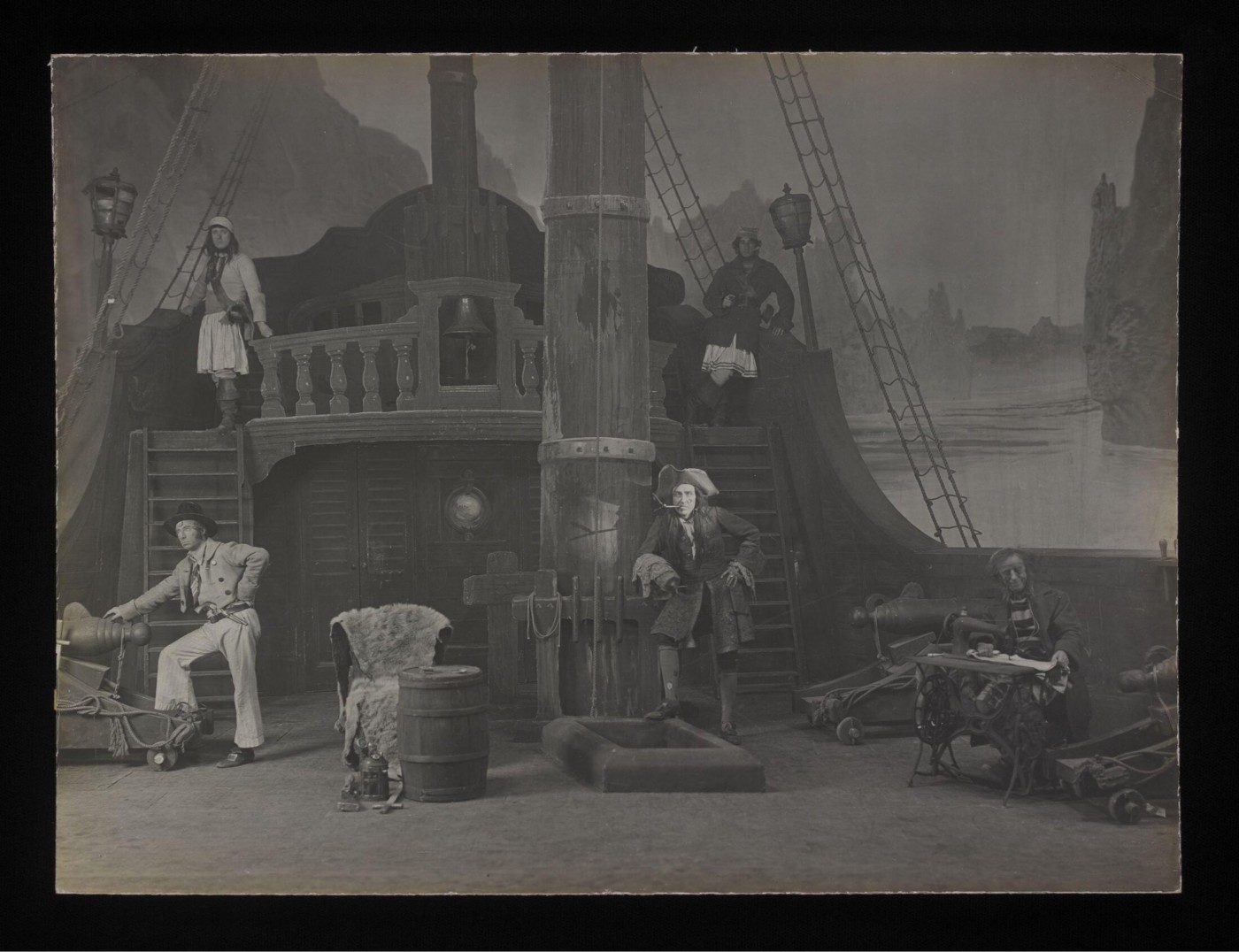
Photographic print showing Robb Harwood as Captain Hook and others in a scene from a production of Peter Panat the Duke of York's Theatre, December 1907 ©Victoria and Albert Museum, London
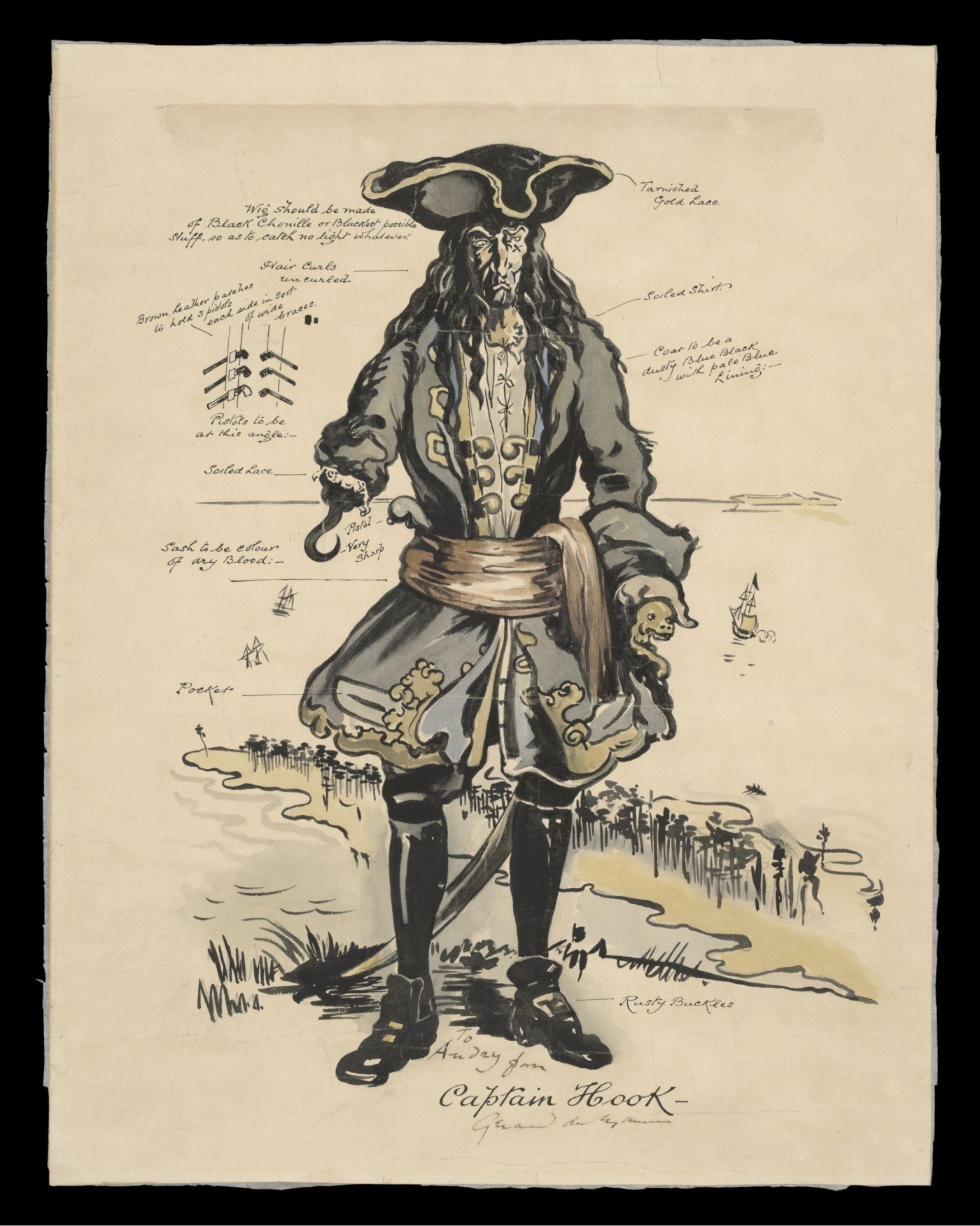
Costume design for Captain Hook by William Nicholson (1872-1949) for the first production of Peter Pan by J.M. Barrie at the Duke of York's Theatre, 1904. Signed and dedicated 'To Audrey' by the original Hook, Gerald Du Maurier ©Victoria and Albert Museum, London
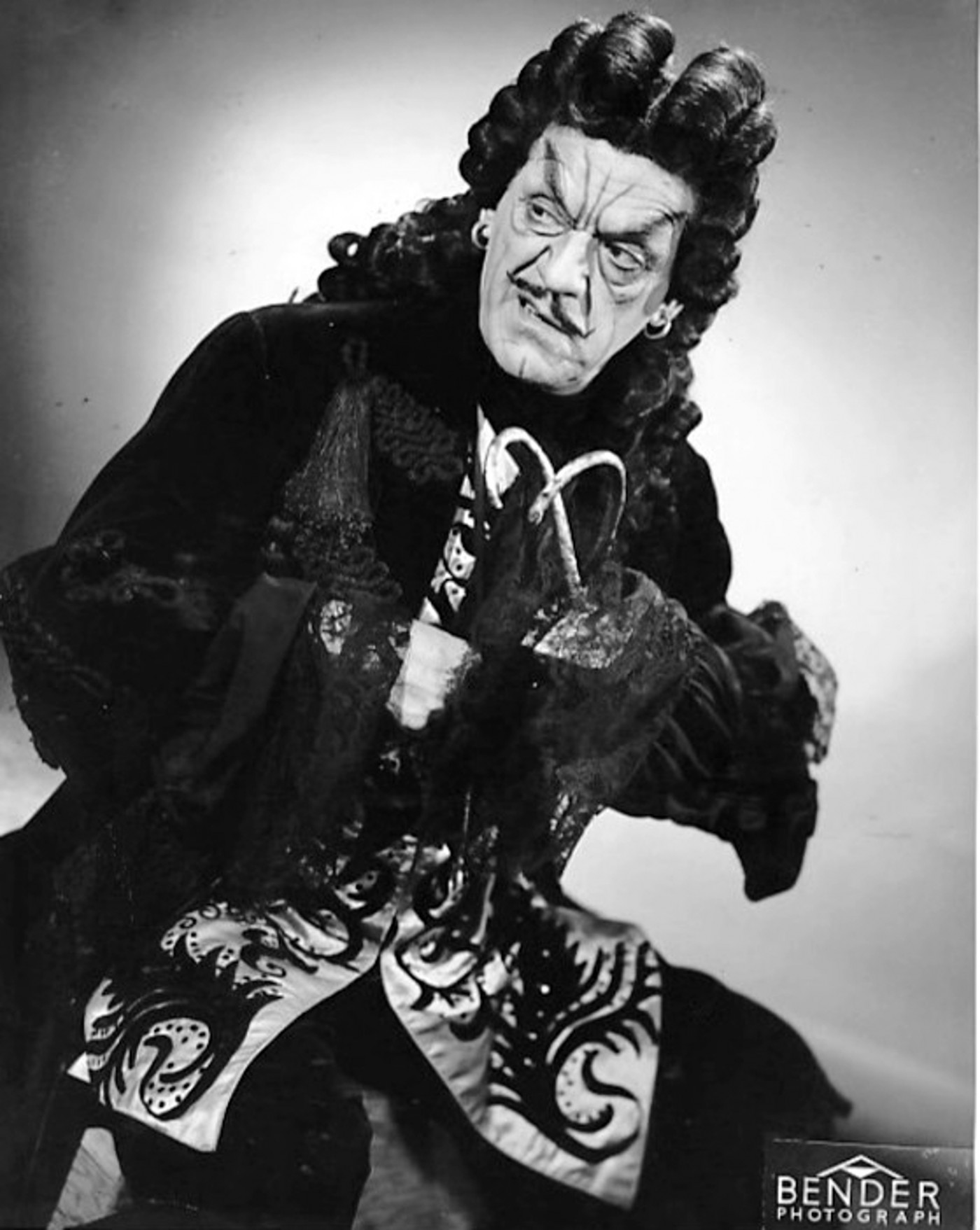
Boris Karloff as Captain Hook from the Broadway play Peter Pan. 1951. Photo by Bender, New York, Public domain, via Wikimedia Commons

Robb Harwood as Captain Hook (1907-09). Unknown author, Public domain, via Wikimedia Commons.
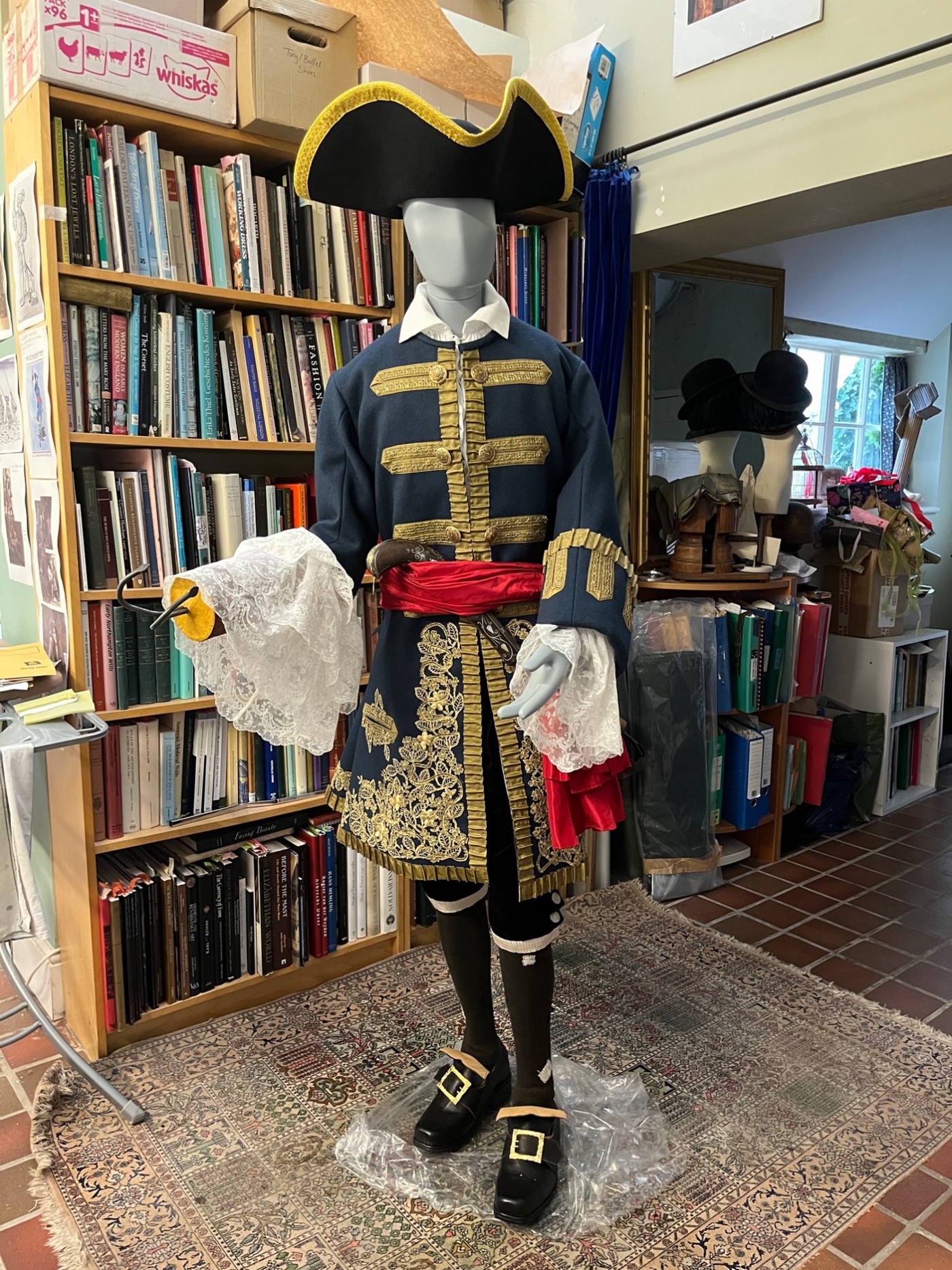
Ninya Mikalia’s Captain Hook costume for the NMMC exhibition 2023. Image credit: Ninya Mikalia
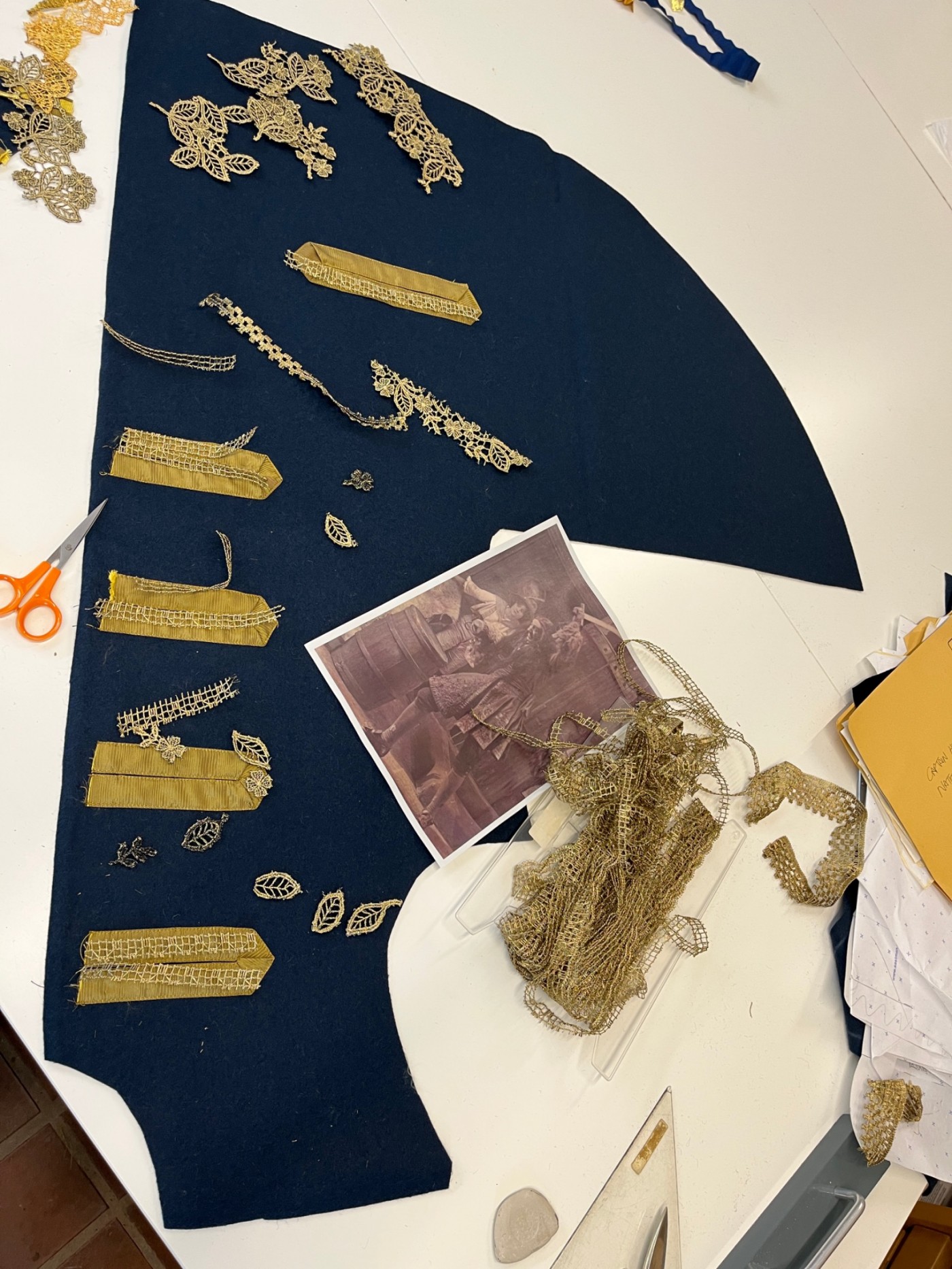
Captain Hook costume in the making Image credit: Ninya Mikalia
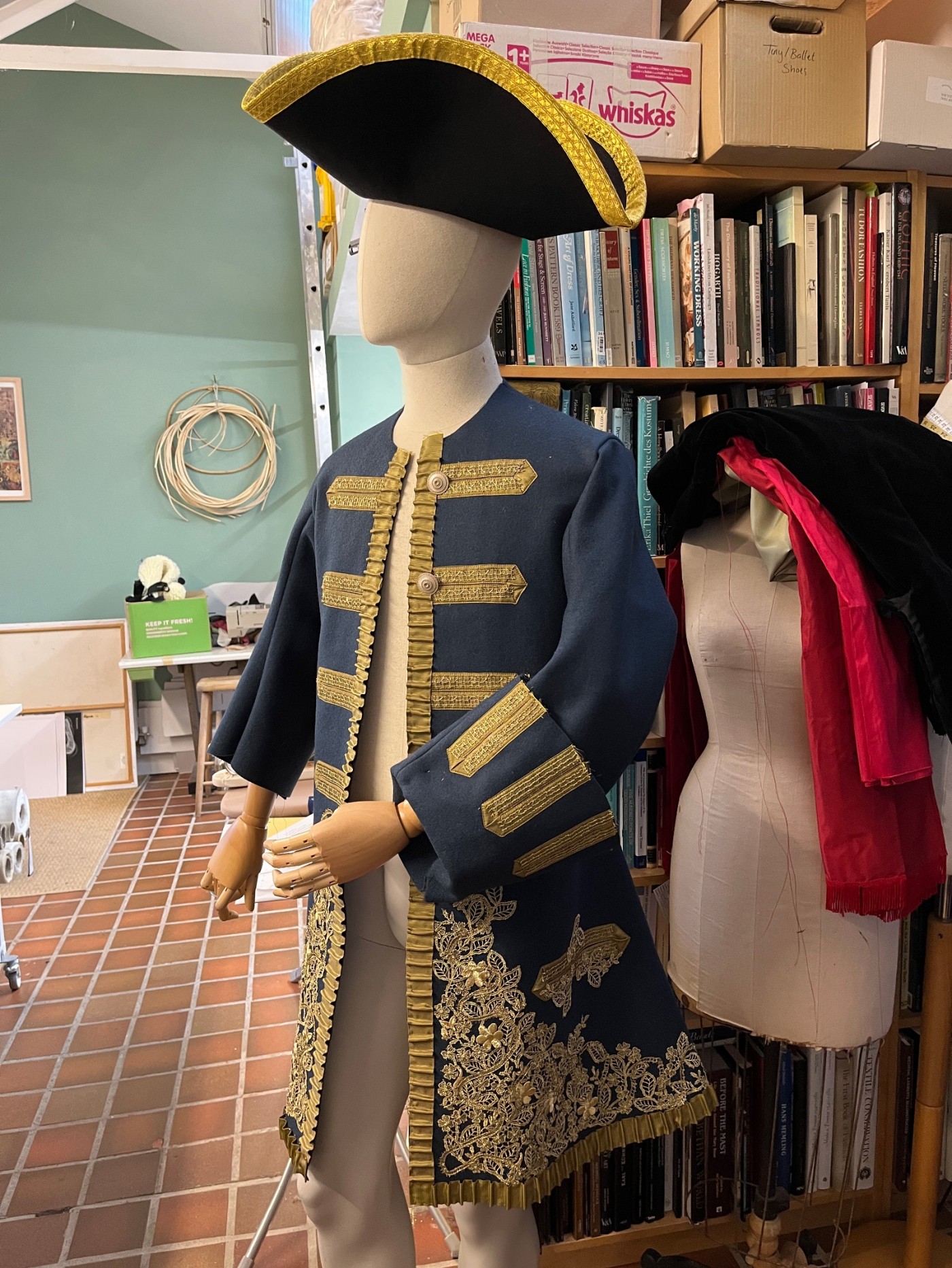
The coat nearly there! Image credit: Ninya Mikalia
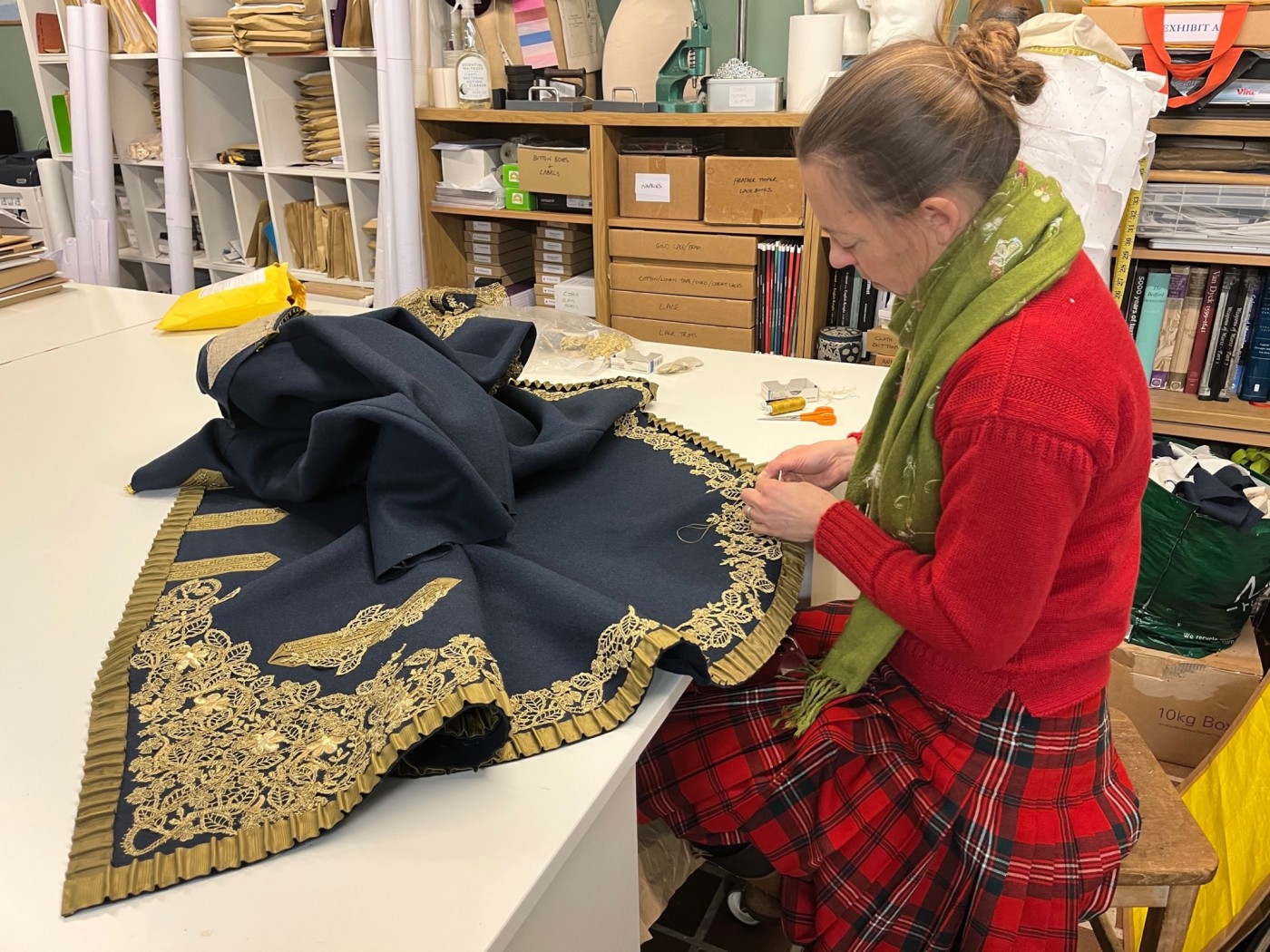
Ninya Mikalia’s working on the coat Image credit: Ninya Mikalia

Image credit: Author
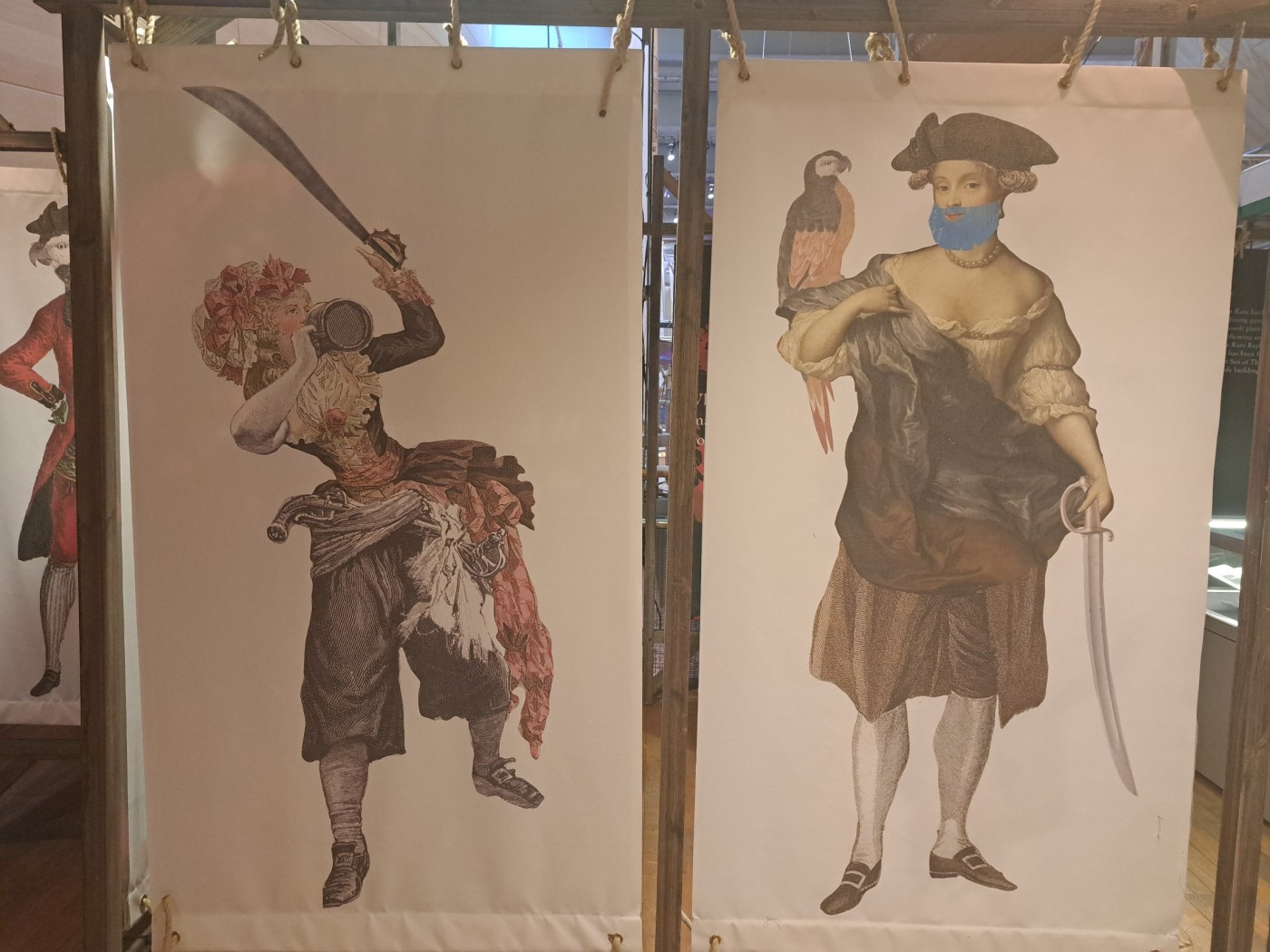
Image credit: Author
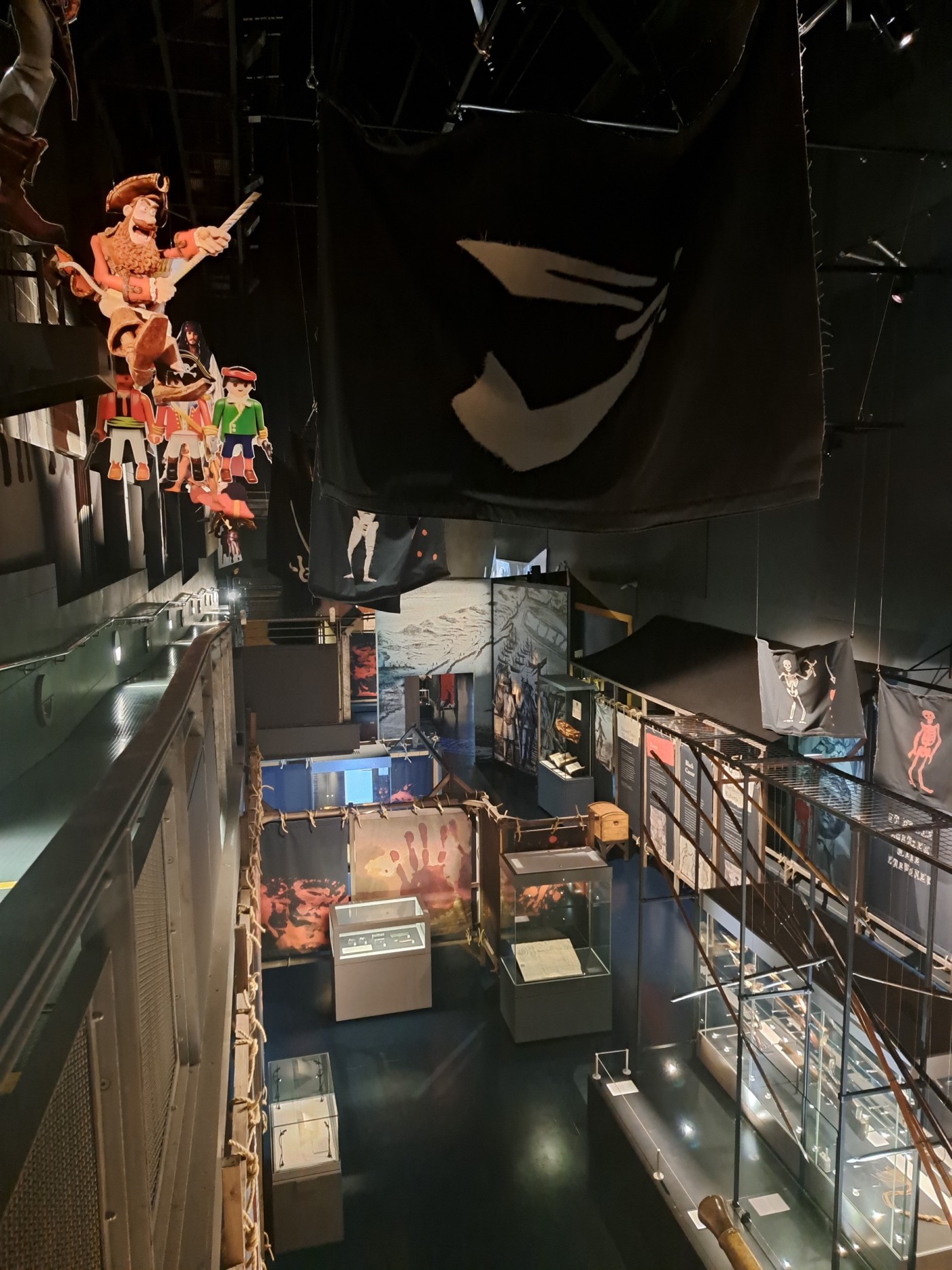
Image credit: Author
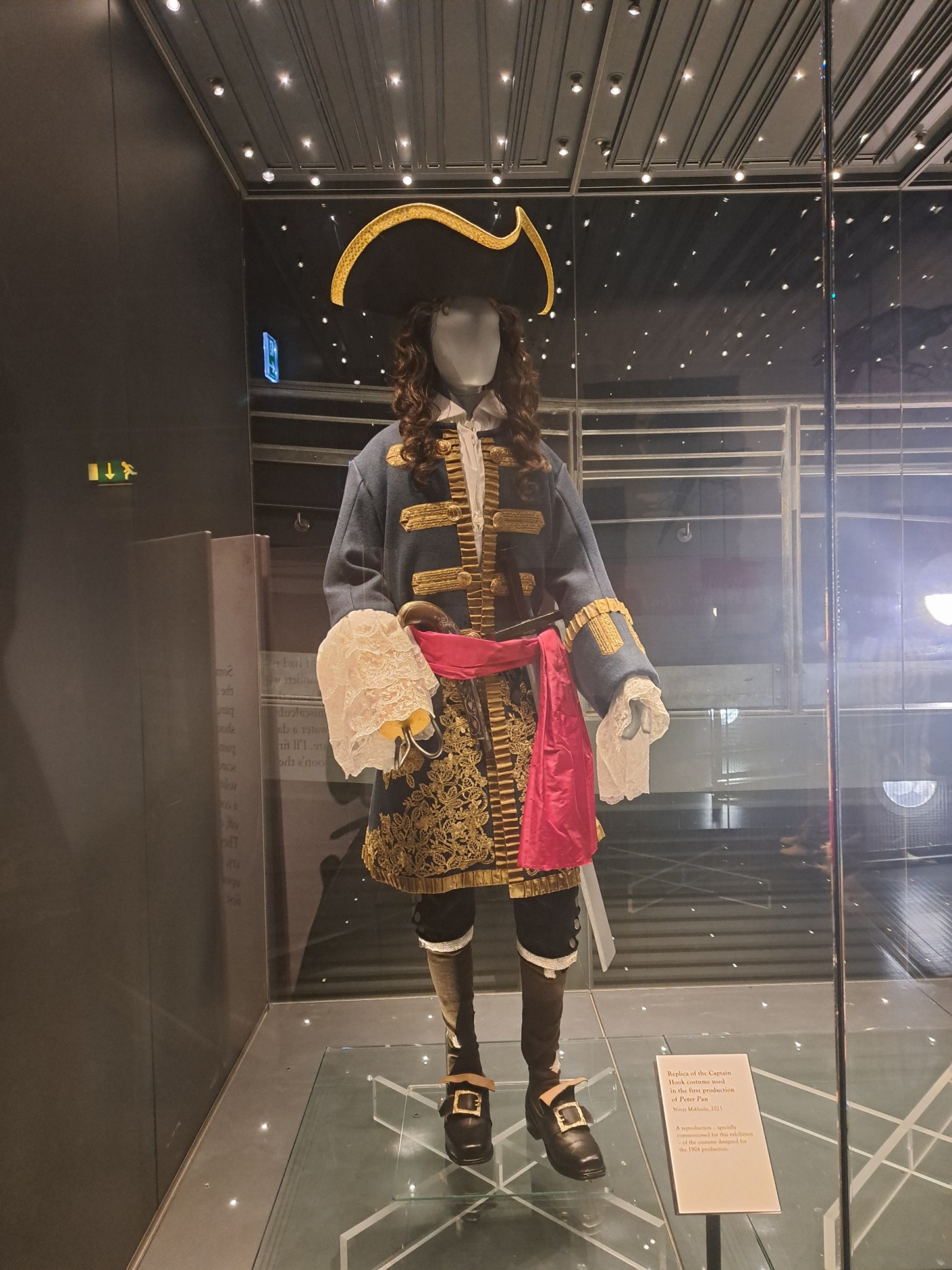
Image credit: Author
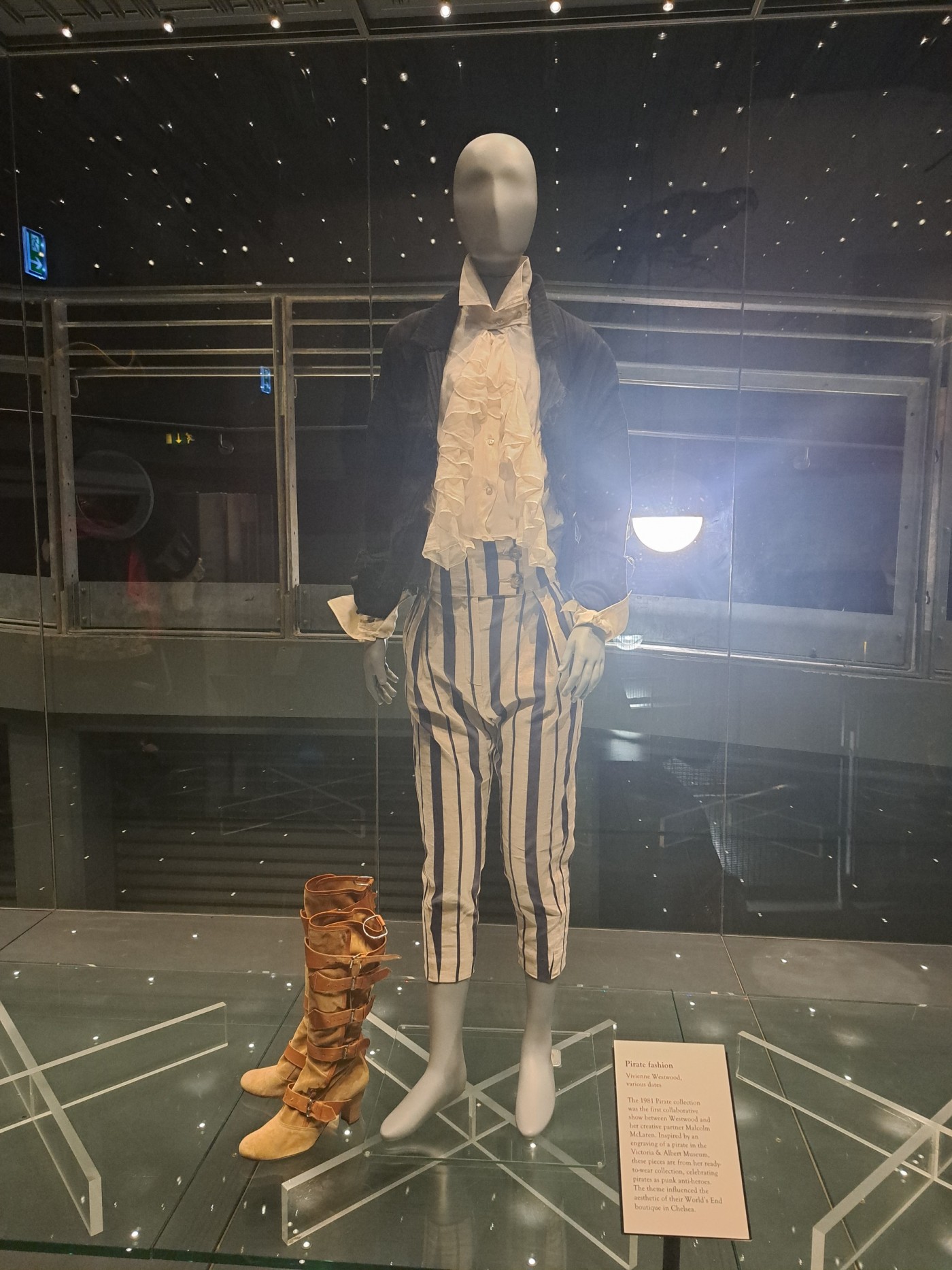
Image credit: Author
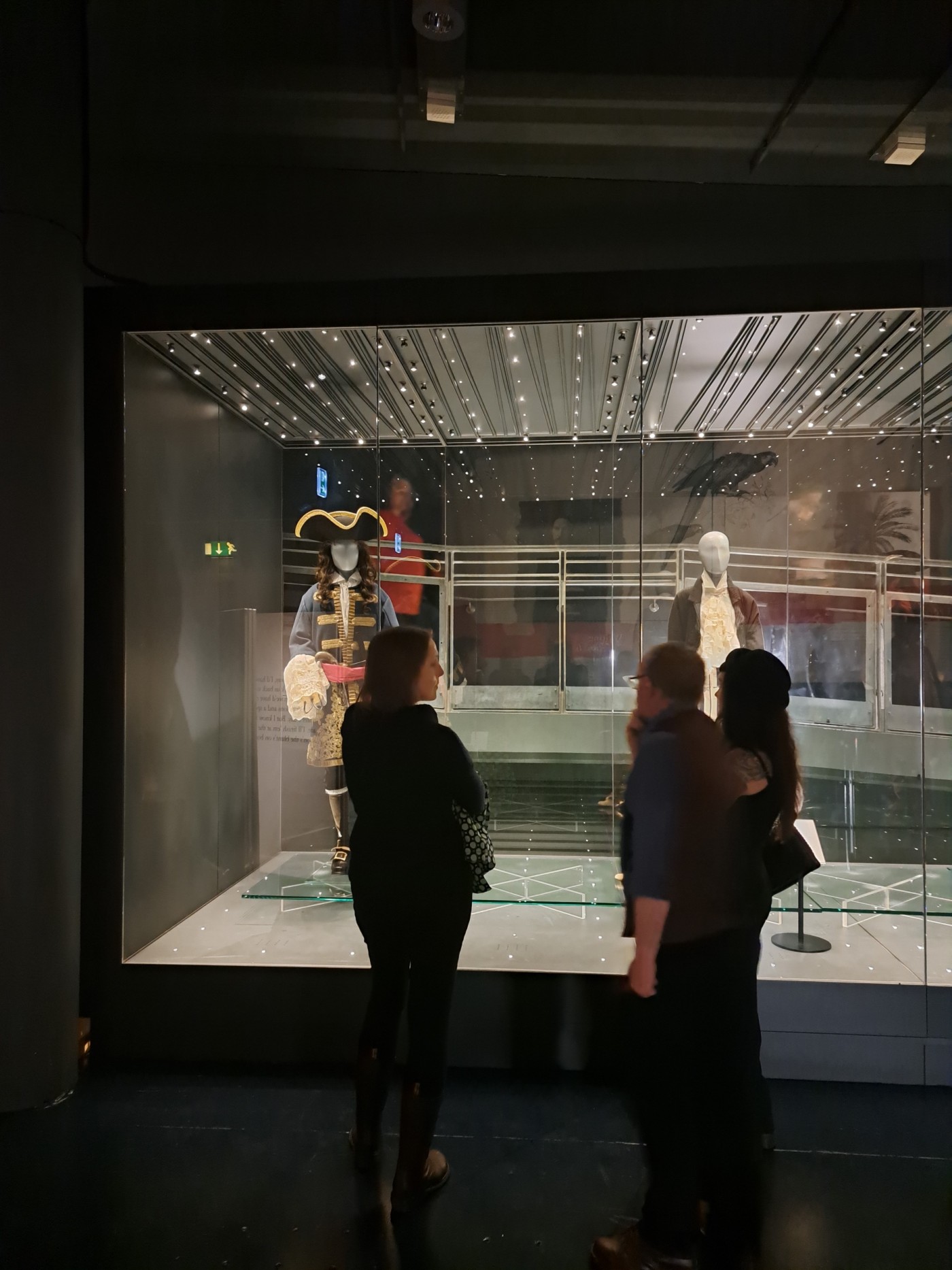
Image credit: Author